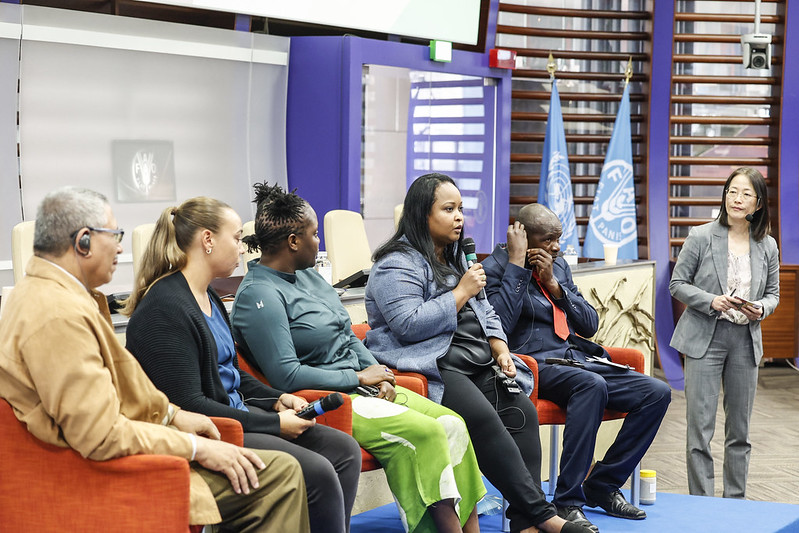Millets impact people’s lives around the world
International Year of Millets panel shares cultural perspectives

©FAO/Riccardo De Luca
Millets were a vital means of survival for chef Fatmata Binta and her family during Sierra Leone’s civil war.
As the International Year of Millets 2023 drew to a close, Binta shared her personal story during a panel discussion held by the Food and Agriculture Organization of the United Nations (FAO) to discuss the impact of the Year.
“Fonio saved my life, as the only available food to sustain us,” she said. “We were saved from hunger.”
Chef Binta, the founder of the Fulani Kitchen Foundation in Sierra Leone and Ghana, said millets not only fed her family during the war, but provided nutritients and versatility to diverse cultures.
The millets side event was moderated by Makiko Taguchi, an Agricultural Officer from FAO’s Plant Production and Protection Division, who is also Lead Technical Officer for the International Year of Millets.
Taguchi said it was inspiring to hear different stories on how millets had touched people around the world and their importance in people’s lives.
The IYM 2023 has helped to raise awareness about millets and their potential as a healthy and sustainable food source. The climate-resilient cereal grasses provide carbohydrates, protein, fibre, and vitamins for millions of people around the world.
Millet production offers new opportunities for farmers
Patrick Mutepeya, a farmer from north-eastern Zimbabwe, said his community recognized the nutritional benefits of millets and about 60 percent of arable land in his village was now devoted to millets production.
Mutepeya is also a member the Community Seedbank in Zimbabwe and is working to conserve, grow and promote traditional grains, mainly millets.
Abderrahmane Benkhalifa, a university professor from Algeria, recalled how millets had been central in his life as a child but that people had recently forgotten about millets because maize and wheat had become more prevalent.
Benkhalifa incorporated millets into the biology course after realizing that he had not been taught about it through the school system, and to educate the young.
He said millets were part of Algeria’s cultural history and their impact on nutrition and health had not yet been fully explored.
Benkhalifa said millets were attractive to bees and there was potential to strengthen this correlation and improve both production of millets and honey.

©FAO/Riccardo De Luca
Celebrating cultural heritage with a focus on the future
Naima Dhore, a young farmer who emigrated to the US from Somalia, said millets were a way to rediscover food traditions and noted their importance in addressing food insecurity.
As a first generation farmer, she said millet cultivation had transformed her life and she wanted to incorporate other east African communities to scale up her operations.
However, she said she was struggling to meet the high demand for millets from African communities due to limited resources, such as harvesting equipment, processing facilities, and storage capacity on her farm in Minnesota.
Hannah Binge, a researcher at Sydney University’s Indigenous Grasslands for Grain, said millets had helped her to reconnect with cultural practices and reaffirm her Gamilaraay Indigenous identity.
Millets production offered exciting opportunities to improve physical and mental well-being as well as the health of the land, she said.
Binge said the university was interacting with schools and communities to promote awareness about millets because many people did not know what they were.

